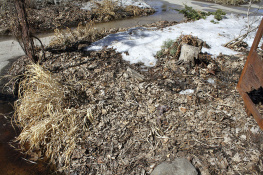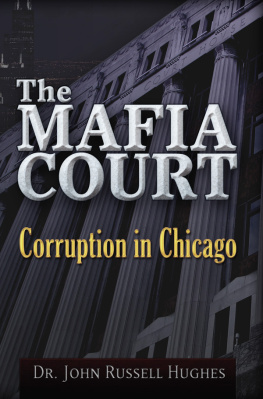E. J. RUSSELL, D.Sc. (Lond.)
GOLDSMITH COMPANY'S SOIL CHEMIST,
ROTHAMSTED EXPERIMENTAL STATION
Cambridge:
at the University Press
1911
| CHAP. | PAGE |
| I. | 1 |
| II. | 9 |
| III. | 19 |
| IV. | 22 |
| V. | 33 |
| VI. | 41 |
| VII. | 53 |
| VIII. | 64 |
| IX. | 82 |
| X. | 100 |
| XI. | 116 |
| 128 |
| 132 |
| FIGURE | PAGE |
| 1. | 2 |
| 2. | 4 |
| 3. | 8 |
| 4. | 11 |
| 5. | 12 |
| 6. |
Phot. Valentine & Son | 13 |
| 7. | 14 |
| 8. | 15 |
| 9. | 17 |
| 10. | 20 |
| 11. |
Phot. Geological Survey | 23 |
| 12. |
Phot. Geological Survey | 25 |
| 13. | 26 |
| 14. |
Phot. Lionel Armstrong | 27 |
| 15. |
Phot. Lionel Armstrong | 28 |
| 16. |
Phot. Geological Survey | 29 |
| 17. | 31 |
| 18. | 32 |
| 19. |
Phot. Valentine & Son | 39 |
| 20. | 42 |
| 21. | 43 |
| 22. | 45 |
| 23. | 50 |
| 24. | 55 |
| 25. | 57 |
| 26. | 58 |
| 27. | 59 |
| 28. | 61 |
| 29. | 65 |
| 30. | 66 |
| 31. | 67 |
| 32. | 69 |
| 33. | 71 |
| 34 a and b. |
Phot. S. T. Parkinson | 72, 73 |
| 35. | 74 |
| 36. | 75 |
| 37. |
Phot. Lionel Armstrong | 77 |
| 38. |
Phot. Lionel Armstrong | 79 |
| 39. |
Phot. Lionel Armstrong | 81 |
| 40. |
Phot. Lionel Armstrong | 83 |
| 41. |
Phot. H. B. Hutchinson | 85 |
| 42. | 88 |
| 43. | 90 |
| 44 a and b. | 94, 95 |
| 45. |
Phot. Lionel Armstrong | 97 |
| 46. | 99 |
| 47. | 103 |
| 48. | 105 |
| 49. |
Phot. R. H. Carter | 107 |
| 50. | 109 |
| 51. | 113 |
| 52. |
Phot. Geological Survey | 117 |
| 53. |
Phot. Geological Survey | 119 |
| 54. | 120 |
| 55. | 121 |
| 56. |
Phot. R. H. Carter | 123 |
| 57. | 126 |
| 58. |
Phot. Lionel Armstrong | 127 |
Fig. 4. Clay was plastered over a square piece of board and completely covered it. After drying for a week the clay had shrunk and cracked
Fig. 4. Clay was plastered over a square piece of board and completely covered it. After drying for a week the clay had shrunk and cracked
You must have found out by now how very slippery clay becomes as soon as it is wet enough. It is not easy to walk over a clay field in wet weather, and if the clay forms part of the slope of a hill it may be so slippery that it becomes dangerous. Sometimes after very heavy rains soil resting on clay on the side of a hill has begun to slide downwards and moves some distance before it stops. Fortunately these land slips as they are called, are not common in England, but they do occur. Fig. 6 shows one in the Isle of Wight, and another is described by Gilbert White in The Natural History of Selborne.
Fig. 5. Clay swelling up when placed in water and overflowing from the egg-cup into which it was put
Fig. 5. Clay swelling up when placed in water and overflowing from the egg-cup into which it was put
Fig. 6. Landslip in the Isle of Wight
Fig. 6. Landslip in the Isle of Wight
Another thing that you will have noticed is that anything made of clay holds water. A simple way of testing this is to put a round piece of tin perforated with holes into a funnel, press some clay on to it and on to the sides of the funnel (Fig. 7), and then pour on rain water. The water does not run through. Pools of water may lie like this on a clay field for a very long time in winter before they disappear, as you will know very well if you live in a clay country. So when a lake or a reservoir is being made it sometimes happens that the sides are lined with clay to keep the water in.
Fig. 7. A thin layer of clay _a_ entirely prevents the water running through
Fig. 7. A thin layer of clay a entirely prevents the water running through
If water cannot get through can air? This is very easily discovered: plug a glass tube with clay and see if you can draw or blow air through. You cannot. Clay can be used like putty to stop up holes or cracks, and so long as it keeps moist it will neither let air nor water through. Take two bottles like those in Fig. 8, stop up the bottom tubes, and fill with water. Then put a funnel through each cork and fit the cork in tightly, covering with clay if there is any sign of a leak. Put a perforated tin disk into each funnel, cover one well with clay and the other with sand. Open the bottom tubes. No water runs out from the first bottle because no air can leak in through the clay, but it runs out very quickly from the second because the sand lets air through. These properties of clay and sand are very important for plants. Sow some seeds in a little jar full of clay kept moist to prevent it cracking, and at the same time sow a few in some moist sand. The seeds soon germinate in the sand but not in the clay. It is known that seeds will not germinate unless they have air and water and are warm enough. They had water in both jars, and they were in both cases warm, but they got no air through the clay and therefore could not sprout. Pure clay would not be good for plants to grow in. Air came through the sand, however, and gave the seeds all they wanted for germination.
Fig. 8. Sand allows air to pass through it, and so water runs out of the bottle. Clay does not let air pass, and the water is therefore kept in, even though the tube is open.
Fig. 8. Sand allows air to pass through it, and so water runs out of the bottle. Clay does not let air pass, and the water is therefore kept in, even though the tube is open.
This also explains something else that you may have noticed. If you tried baking one of your model bricks in the fire you probably found that the brick exploded and shattered to pieces: the water still left in the brick changed to steam when it was heated, but the steam could not escape through the clay, and so it burst the clay. In a brick works the heat is very gradually applied and the steam only slowly forms, so that it has time to leak away, then when it has all gone the brick can be heated strongly. You should try this with one of your model bricks; leave it in a hot place near the stove or on the radiator for a week or more and then see if you can bake it without mishap.











